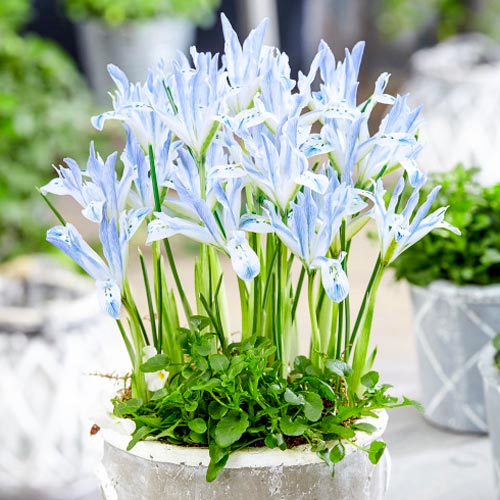
Iris Fall Planting
If you are fond of irises and want to have more in your garden, one inexpensive way is to start them from seed. If you have a little patience (and you enjoy a surprise-more on that later) you can produce more irises very easily.We’ll start by assuming your favorite iris produces a seedpod after bloom, which will be a somewhat lumpy, green oval atop the flower stem after it fades.To keep the seedpod, avoid the impulse to deadhead your irises immediately after blooms fade. Let the seedpods ripen and turn fully brown and begin to split open before you cut them off and store them in a cool, dry place. In the fall, as it begins to cool, plant the seeds in the garden in an area prepared with amended soil and that is weed free. Plant the seeds about ½” to ¾” deep and a few inches apart, and mark the area. Now let nature take its course.In the spring, about half of the seeds should have sprouted.
How to Grow Iris - Caring for a Growing Iris Water generously after planting. Taper watering off as the plant becomes established. Keep rhizomes uncovered and roots well-aerated. Trim brown or dying leaf matter and the flower stalk. Florists' Favorites Dutch iris are popular with florists and home gardeners because they are dependably pretty and easy to use. Long, strong, straight stems pair with blooms that are an ideal size for medium bouquets.

Be careful-they look like grass at the seedling stage until they develop the distinctive, flat fan arrangement of leaves that are typical of the iris family. Once they are a few inches tall, they can be carefully dug up and moved to their permanent location. Vietcong purple haze xbox cheats download. Don’t disturb the rest of the seed nursery area yet-the seeds that did not sprout the first year may very well sprout the second year, and you’ll have yet another crop of baby plants.